✅ Author Introduction: A passionate researcher and Matlab simulation developer, skilled in data processing, modeling and simulation, program design, obtaining complete code, paper reproduction, and scientific simulation.
🍎 Previous Review: Follow my personal homepage:Matlab Research Studio
🍊 Personal Motto: Pursue knowledge through exploration, complete Matlab code and simulation consultation available via private message.
Intelligent Optimization Algorithms Neural Network Prediction Radar Communication Wireless Sensors Power Systems
Signal Processing Image Processing Path Planning Cellular Automata Unmanned Aerial Vehicles
Physical Applications Machine Learning Series Workshop Scheduling SeriesFiltering and Tracking Series Data Analysis Series
Image Processing Series
🔥 Content Introduction
The Wireless Sensor Network (WSN) is an emerging information acquisition and processing technology that has been widely applied in environmental monitoring, agricultural production, intelligent transportation, and disaster warning in recent years. The performance of WSN is directly affected by its network deployment method. A well-optimized network deployment scheme can significantly enhance the network’s coverage, connectivity, energy efficiency, and robustness, ensuring that the WSN can efficiently and reliably complete its designated tasks. Traditional WSN deployment methods often rely on manual experience or grid-based deployment, which are inefficient and difficult to adapt to complex and changing environments. Therefore, finding a method that can automatically and efficiently optimize WSN deployment schemes has become an important research topic. In recent years, meta-heuristic algorithms have shown strong potential in WSN deployment optimization problems due to their global search capabilities and the lack of gradient information. This article will explore how to use the improved Flower Pollination Algorithm (FPA) to optimize WSN deployment, aiming to improve the performance and applicability of WSN.
1. Challenges and Goals of WSN Deployment Optimization
The goal of WSN deployment optimization is to find a network topology that can maximize or minimize certain performance indicators while satisfying specific constraints. These constraints typically include:
-
Coverage Constraint: Ensure that the target area is covered by a sufficient number of sensor nodes to avoid blind spots. Coverage is the basis for WSN to provide high-quality data.
-
Connectivity Constraint: Ensure that all sensor nodes in the network can communicate with each other, forming a connected whole. Connectivity is key to data transmission and network control.
-
Energy Consumption Constraint: WSN is typically battery-powered, and energy is limited. The optimized deployment scheme needs to minimize the overall energy consumption of the network to extend its lifespan.
-
Cost Constraint: The number of deployed sensor nodes is limited by cost. A trade-off between performance and cost is necessary.
-
Node Distribution Uniformity Constraint: Avoid excessive concentration or dispersion of nodes to ensure balanced monitoring capability of the network.
Therefore, the WSN deployment optimization problem is a typical multi-objective optimization problem that requires simultaneous consideration of multiple conflicting objectives. The challenges mainly lie in the following aspects:
-
Complexity: The WSN deployment space is a high-dimensional space, and the complexity of finding the optimal solution grows exponentially.
-
Constraints: Various constraints exist in real applications, such as terrain limitations, obstacle limitations, and node quantity limitations.
-
Dynamics: The WSN application environment may change over time, requiring dynamic adjustments to the deployment scheme to adapt to the new environment.
2. Flower Pollination Algorithm and Its Application in WSN Deployment Optimization
The Flower Pollination Algorithm (FPA) is a meta-heuristic algorithm based on the pollination process of flowers, proposed by Yang in 2012. This algorithm simulates the natural reproduction process of flowers through self-pollination and cross-pollination. FPA has advantages such as simplicity, efficiency, and ease of implementation, and it performs well in solving various optimization problems.
The core idea of the FPA algorithm is to compare the solution space of the optimization problem to the survival space of flowers, with each candidate solution representing a flower, and the quality of the solution corresponding to the flower’s pollination success rate. The algorithm continuously iterates and updates the population by simulating the two strategies of self-pollination (local search) and cross-pollination (global search) to ultimately find the optimal solution.
When applying FPA to the WSN deployment optimization problem, the position coordinates of each sensor node can be treated as the positions of flowers, and the network’s coverage, connectivity, energy efficiency, and other indicators can be used as the fitness function of the flowers. Through the iterative search of FPA, a set of sensor node position coordinates that can maximize network performance can be found.
Specifically, the steps to apply FPA for WSN deployment optimization are as follows:
-
Initialize Population: Randomly generate a set of position coordinates for sensor nodes as the initial population.
-
Calculate Fitness: Based on the position coordinates of each node, calculate the network’s coverage, connectivity, energy efficiency, etc., and compute the comprehensive fitness value according to the set weights.
-
Iterative Update:
-
Cross-Pollination (Global Search): With probability p, randomly select two individuals i and j from the population, and update the position of the current individual i according to the following formula: x<sub>i</sub><sup>t+1</sup> = x<sub>i</sub><sup>t</sup> + L(x<sub>i</sub><sup>t</sup> – x<sub>j</sub><sup>t) where x<sub>i</sub><sup>t</sup> represents the position of the ith individual at generation t, and L is the step size of the Lévy flight distribution, used to simulate the randomness of pollen spread.
-
Self-Pollination (Local Search): With probability 1-p, randomly select a position j from the neighborhood of the current individual i, and update the position of individual i according to the following formula: x<sub>i</sub><sup>t+1</sup> = x<sub>i</sub><sup>t</sup> + ε(x<sub>k</sub><sup>t</sup> – x<sub>l</sub><sup>t</sup>) where x<sub>k</sub><sup>t</sup> and x<sub>l</sub><sup>t</sup> are two individuals randomly selected from the population, and ε is a random number uniformly distributed in [0,1].
Boundary Handling: Handle individuals that exceed the search space boundary to bring them back into the valid range.
Update Optimal Solution: Compare the fitness values of each individual in the current population with the fitness value of the global optimal solution. If the current individual is better, update the global optimal solution.
Termination Condition: The algorithm ends when the maximum number of iterations is reached or other termination conditions are met.
⛳️ Results
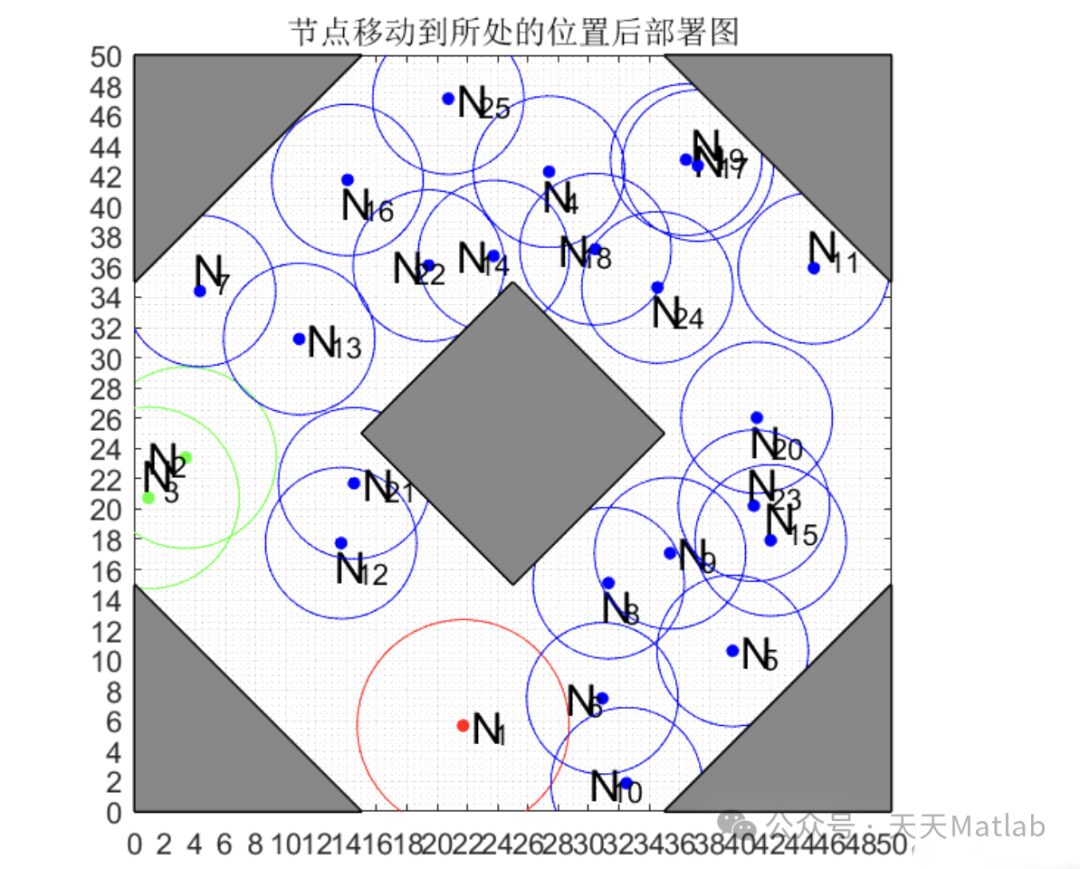
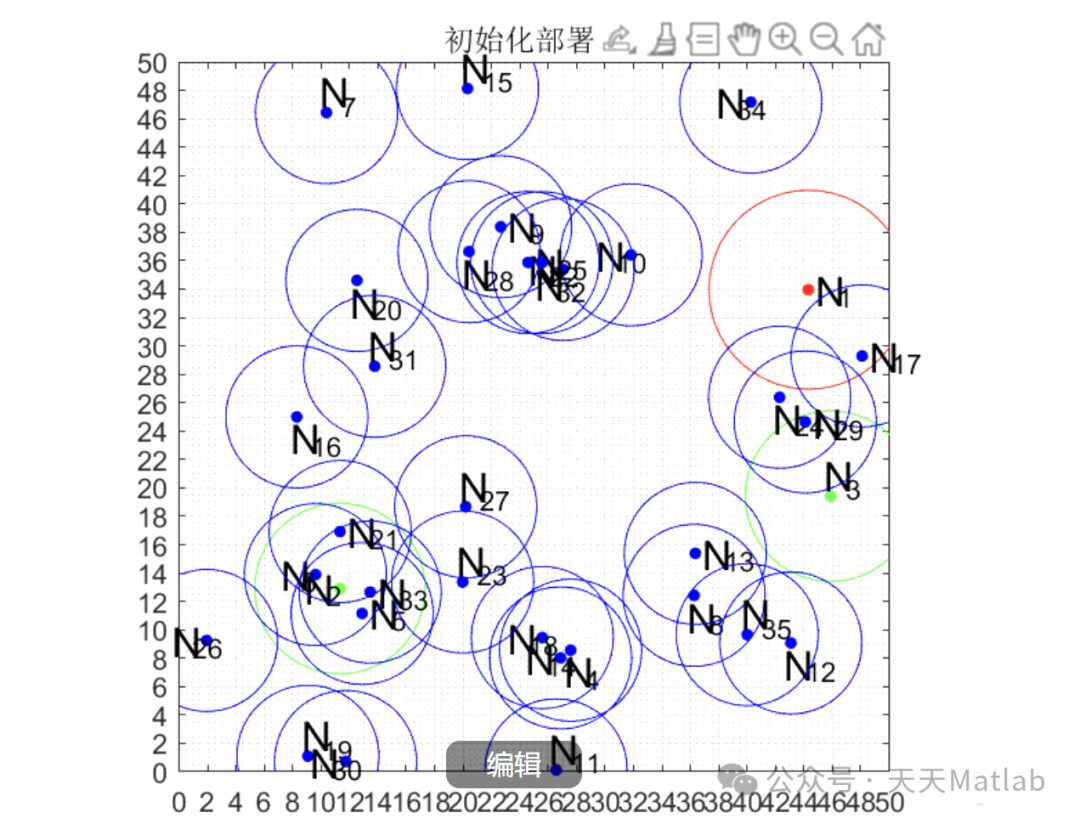
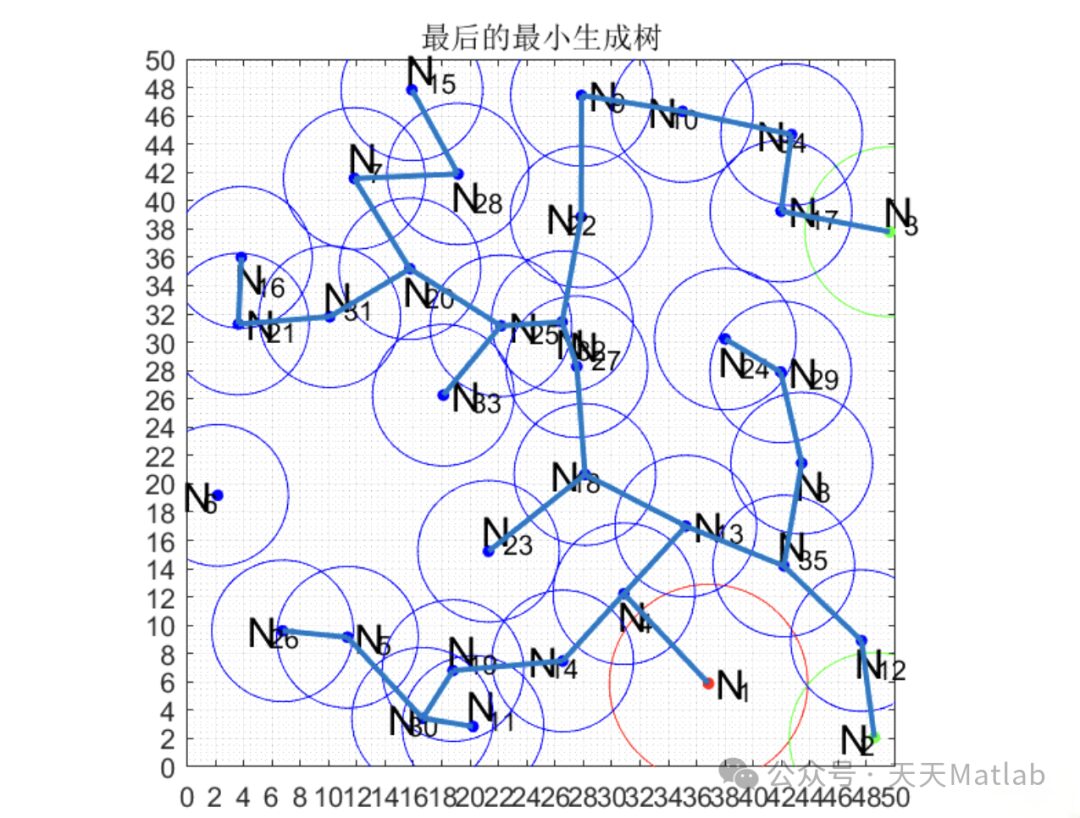
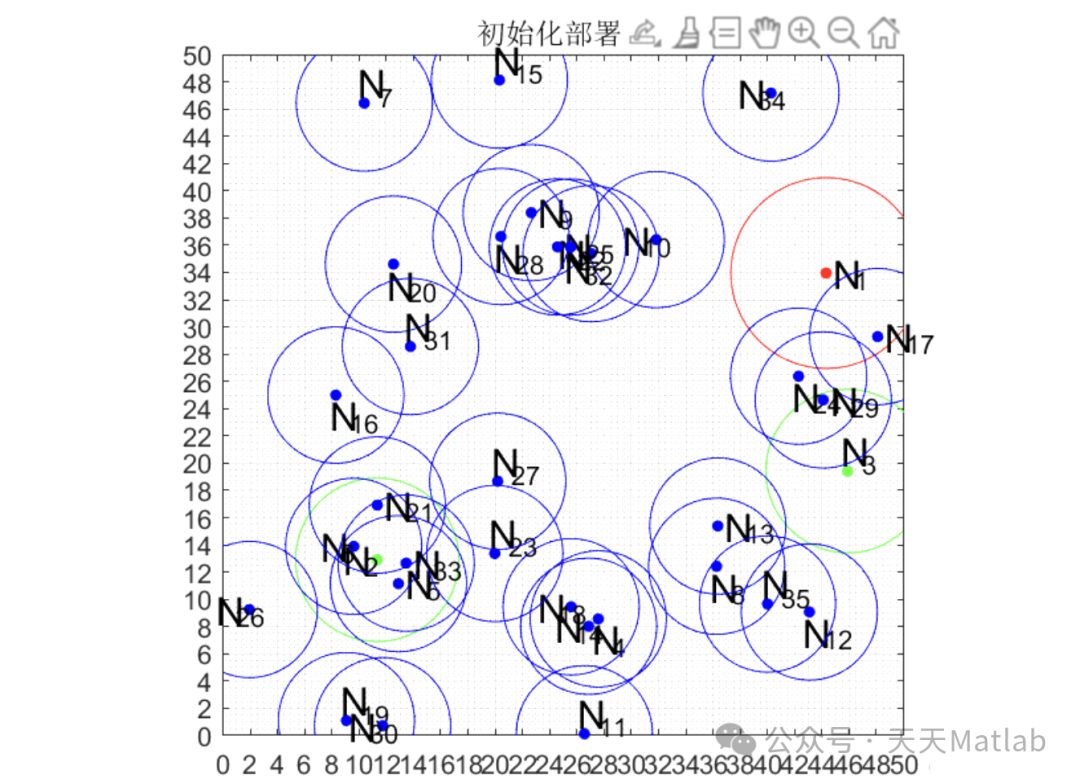
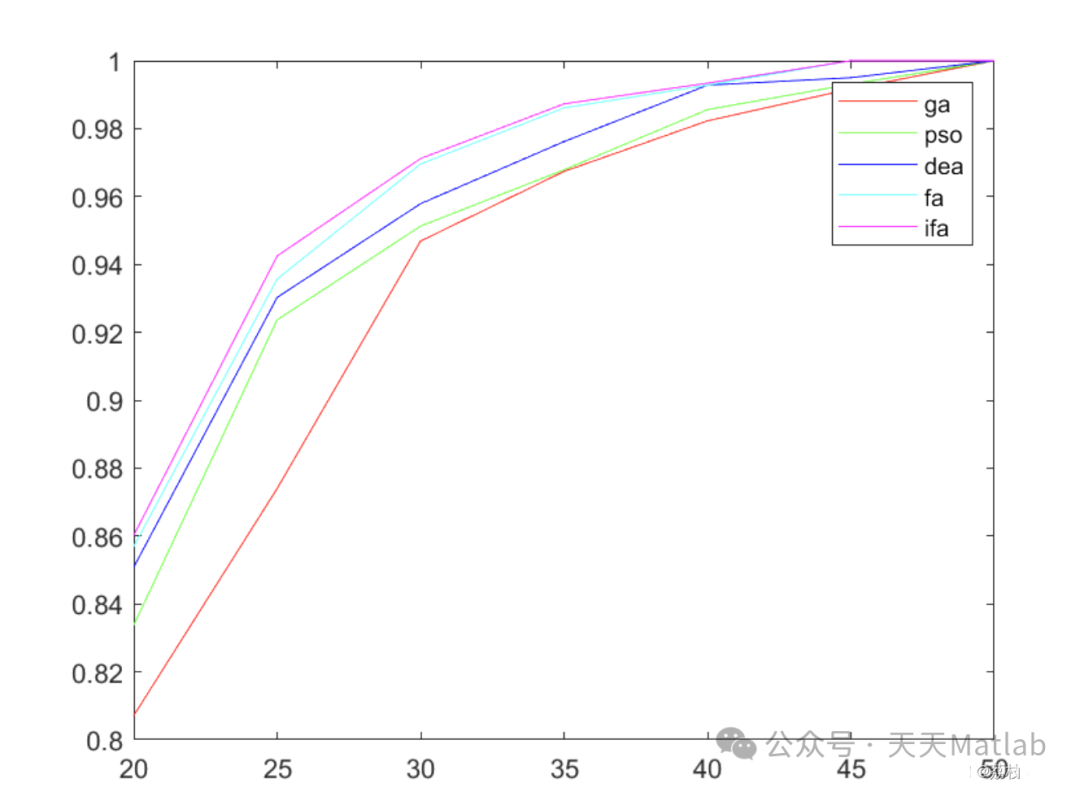
🔗 References
[1] Wang Zhendong, Xie Huamao, Hu Zhongdong, et al. Optimization of Wireless Sensor Network Deployment Using Improved Flower Pollination Algorithm [J]. Journal of System Simulation, 2021. DOI:10.16182/j.issn1004731x.joss.19-0580.
📣 Partial Code
🎈 Some theoretical references are from network literature; please contact the author for removal if there is copyright infringement.
👇 Follow me to receive a wealth of Matlab e-books and mathematical modeling materials.
🏆 Our team specializes in guiding and customizing various research fields of MATLAB simulation to support your research dreams:
🌈 Various intelligent optimization algorithm improvements and applications
Production scheduling, economic scheduling, assembly line scheduling, charging optimization, workshop scheduling, departure optimization, reservoir scheduling, three-dimensional packing, logistics site selection, cargo location optimization, bus scheduling optimization, charging station layout optimization, workshop layout optimization, container ship loading optimization, pump combination optimization, medical resource allocation optimization, facility layout optimization, visual coverage base station and UAV site selection optimization, knapsack problem, wind farm layout, time slot allocation optimization, optimal distributed generation unit allocation, multi-stage pipeline maintenance, factory-center-demand point three-level site selection problem, emergency supply distribution center site selection, base station site selection, road lamp pole arrangement, hub node deployment, transmission line typhoon monitoring devices, container scheduling, unit optimization, investment portfolio optimization, cloud server combination optimization, antenna linear array distribution optimization, CVRP problem, VRPPD problem, multi-center VRP problem, multi-layer network VRP problem, multi-center multi-vehicle VRP problem, dynamic VRP problem, two-level vehicle routing planning (2E-VRP), electric vehicle routing planning (EVRP), oil-electric hybrid vehicle routing planning, hybrid flow shop problem, order splitting scheduling problem, bus scheduling optimization problem, flight shuttle vehicle scheduling problem, site selection path planning problem, port scheduling, port bridge scheduling, parking space allocation, airport flight scheduling, leak source location.
🌈 In the field of machine learning and deep learning time series, regression, classification, clustering, and dimensionality reduction
2.1 BP Time Series, Regression Prediction, and Classification
2.2 ENS Voice Neural Network Time Series, Regression Prediction, and Classification
2.3 SVM/CNN-SVM/LSSVM/RVM Support Vector Machine Series Time Series, Regression Prediction, and Classification
2.4 CNN|TCN|GCN Convolutional Neural Network Series Time Series, Regression Prediction, and Classification
2.5 ELM/KELM/RELM/DELM Extreme Learning Machine Series Time Series, Regression Prediction, and Classification
2.6 GRU/Bi-GRU/CNN-GRU/CNN-BiGRU Gated Neural Network Time Series, Regression Prediction, and Classification
2.7 Elman Recurrent Neural Network Time Series, Regression Prediction, and Classification
2.8 LSTM/BiLSTM/CNN-LSTM/CNN-BiLSTM Long Short-Term Memory Neural Network Series Time Series, Regression Prediction, and Classification
2.9 RBF Radial Basis Neural Network Time Series, Regression Prediction, and Classification
2.10 DBN Deep Belief Network Time Series, Regression Prediction, and Classification
2.11 FNN Fuzzy Neural Network Time Series, Regression Prediction
2.12 RF Random Forest Time Series, Regression Prediction, and Classification
2.13 BLS Broad Learning System Time Series, Regression Prediction, and Classification
2.14 PNN Pulse Neural Network Classification
2.15 Fuzzy Wavelet Neural Network Prediction and Classification
2.16 Time Series, Regression Prediction, and Classification
2.17 Time Series, Regression Prediction, and Classification
2.18 XGBOOST Ensemble Learning Time Series, Regression Prediction, and Classification
2.19 Transform Various Combinations Time Series, Regression Prediction, and Classification
Covering wind power prediction, photovoltaic prediction, battery life prediction, radiation source identification, traffic flow prediction, load forecasting, stock price prediction, PM2.5 concentration prediction, battery health state prediction, electricity consumption prediction, water optical parameter inversion, NLOS signal recognition, precise subway stop prediction, transformer fault diagnosis.
🌈 In the field of image processing
Image recognition, image segmentation, image detection, image hiding, image registration, image stitching, image fusion, image enhancement, image compressed sensing.
🌈 In the field of path planning
Traveling Salesman Problem (TSP), Vehicle Routing Problem (VRP, MVRP, CVRP, VRPTW, etc.), UAV three-dimensional path planning, UAV collaboration, UAV formation, robot path planning, grid map path planning, multimodal transport problem, electric vehicle routing planning (EVRP), two-level vehicle routing planning (2E-VRP), oil-electric hybrid vehicle routing planning, ship trajectory planning, full path planning, warehouse patrol.
🌈 In the field of UAV applications
UAV path planning, UAV control, UAV formation, UAV collaboration, UAV task allocation, UAV safe communication trajectory online optimization, vehicle collaborative UAV path planning.
🌈 In the field of communication
Sensor deployment optimization, communication protocol optimization, routing optimization, target location optimization, Dv-Hop localization optimization, Leach protocol optimization, WSN coverage optimization, multicast optimization, RSSI localization optimization, underwater communication, communication upload and download allocation.
🌈 In the field of signal processing
Signal recognition, signal encryption, signal denoising, signal enhancement, radar signal processing, signal watermark embedding extraction, EMG signals, EEG signals, signal timing optimization, ECG signals, DOA estimation, encoding and decoding, variational mode decomposition, pipeline leakage, filters, digital signal processing + transmission + analysis + denoising, digital signal modulation, bit error rate, signal estimation, DTMF, signal detection.
🌈 In the field of power systems
Microgrid optimization, reactive power optimization, distribution network reconstruction, energy storage configuration, orderly charging, MPPT optimization, household electricity.
🌈 In the field of cellular automata
Traffic flow, crowd evacuation, virus spread, crystal growth, metal corrosion.
🌈 In the field of radar
Kalman filtering tracking, trajectory association, trajectory fusion, SOC estimation, array optimization, NLOS identification.
🌈 In workshop scheduling
No-wait flow shop scheduling problem NWFSP, permutation flow shop scheduling problem PFSP, hybrid flow shop scheduling problem HFSP, no-idle flow shop scheduling problem NIFSP, distributed permutation flow shop scheduling problem DPFSP, blocking flow shop scheduling problem BFSP.
👇